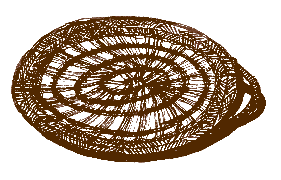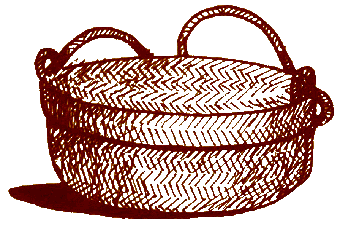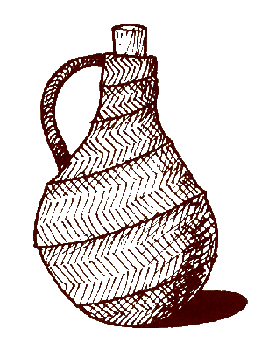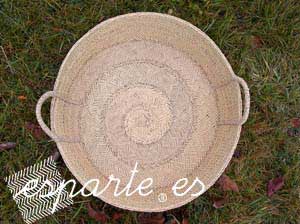
Tradition (from latin, "traditio, -onis"): transmission, donation, made in speaking in general terms, of historical deeds, from one generation to the next, as it is considerated important to leave a legate to the younger generations.
Esparto evokes warm and affectionate memories to the majority of elderly people, who resist the fast pace of life. Old days ... full of effort and hard work due to necessity and lack of free time. Nights facing children routinely crush two branches of esparto for their father. He always needed a certain amount of crushed esparto to pleat and repair his sandals (esparteñas). Work in the fields destroyed them every month.
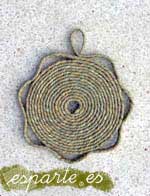
By the fireside people pleited the mats that helped against cold and gave some warmth to the floor. In a by-gone era of agricultural work, long winter nights allowed the plaiting of "capazos" (wide baskets) that went with the seeds and came with the fruits. At the same time came from the artisans hands, "tizneros" (to put the hot pan) and "baleos" (used to cleaning) that took hot migas (a mixture made of flour and water fried in olive oil) in rainy days. "Barjas" (esparto bags) were plaited to keep the treasure of lunch and meal to give energy during the hard working days. On the furthest corner of the cave were those "garrafas" (carafes) wrapped in fine pleita that contained wine from the last harvest. The pantry kept the "garrafas" with oil. What better, if not, than a good "bombona" (carafe made of glass, called so in the area Campo de San Juan) in its pleita! It was excellent to keep the oil waiting for the meeting with freshly baked bread. Near it were the other carafes with wide mouths, macerating olives with rosemary and thyme. On the kitchen table is the cheese, shaped in the pleita; it repairs weariness at dinner and helps to sleep well. And melons hung in "colañas" (wood beams that support a ceiling structure) in their "meloneros" (a little bag made of esparto to keep melons) waiting for the next Christmas.
It were hard memories to think of going to harvest olives with mats! Twenty kg of olives were a dead weight plus 20 or 25 kg of esparto with the agravating thing that it was very uncomfortable to move the mats and nobody knew what was the best place
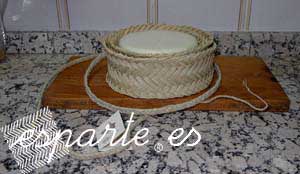 to catch the mats.
to catch the mats.
Aside the warmness of the fire they went weaving carpets which attenuated the coldness and contributed to give some warmth to the floor. In the agricultural recess, the long winter evenings, allowed to weave or "pleit" large baskets, carrying seeds when it was time to sow, and carrying the fruits when it was time to harvest. Arised, likewise, among the craftswomen hands, "tizneros" and "baleos" that were keeping the crumbs hot on rainy days. "Barjas" guarding the treasure of lunch and food to replenish energy amid the intense work of the day.
Esparto grass, for its own reasons, is, without a doubt, a very peculiar way of life because it brings together all the nuances that make it great in resistance, flexibility and durability. His "last name" of "tenacissima" refers to his ability to maintain himself beyond adversity; The presence of water in its veins makes it a material adapted to any function and task since the versatility it adopts is astonishing; its durability makes it travel between remote, current and unknown worlds.
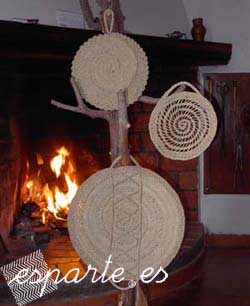
Work that was plaited in silence, with the soft light of an oil lamp, with the sacrifice of every day life, and with the shortage of facilities that were its warp. It was not casual the conversation I had with Ramón some years ago, in which he told me "Why do you need to plait esparto?, if you only knew..." It was an art and we didn't discover anything new. It was an art to manage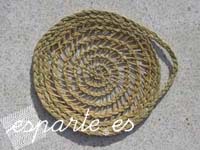 to and accept living, although it was only because they didn't know anything else. It was an art and it doesn't belong to us, it is an heritage of mankind.
to and accept living, although it was only because they didn't know anything else. It was an art and it doesn't belong to us, it is an heritage of mankind.
Here you can see some works and its different uses.
Also there is a short reference how to make some util tools.

